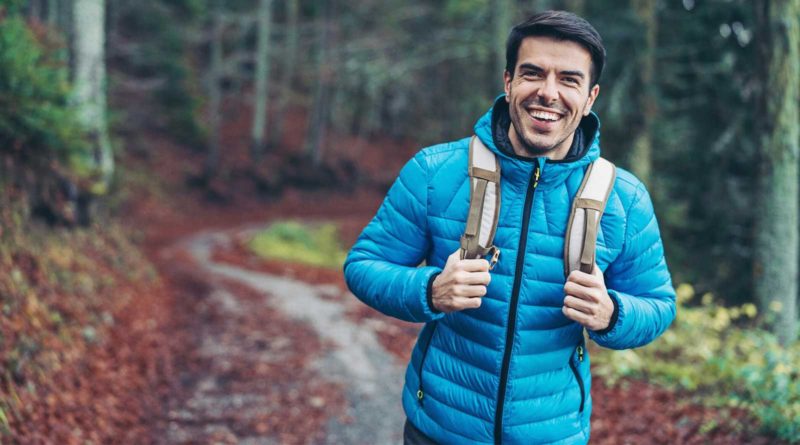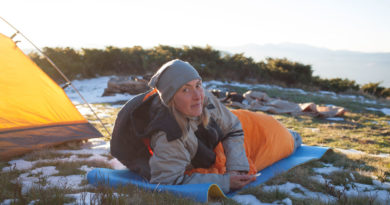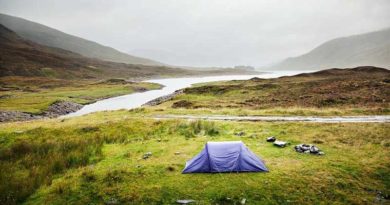Best Hiking Jackets for Cold Weather 2024
When you are planning to hike in cold weather, you need a jacket that’s going to keep you warm and comfortable. The jacket you choose should keep you warm but not too warm and at the same time, it should provide a good amount of breathability to avoid sweat problems. You also need features like pockets, waterproof designs, a nice hood, etc. Although you can look for all of these features in a single jacket, it can be very challenging to find the one that has all the features. So, you need to choose a jacket that strikes a good balance between weight, features, and price.
So here is the list of top winter jackets that offer a good set of features for extreme cold weather hiking.
1. REI Co-op Stormhenge Down Hybrid
Shell: Nylon
Insulation: 850 fill-power down/synthetic blend
Weight: 1 lb. 15.75 oz.
Waterproof: HydroWall 2-layer
The Stormhenge Down Hybrid is a high-performance and versatile jacket that comes with plenty of features and weather protection. It is warm, weather-resistant, and filled with 850 fill-power down. The amount of down present makes this jacket very lofty and it is going to keep you warm on your winter hikes. The 850 fill-power down is highly compressible and it provides a great warmth-to-weight ratio. The shell material is made of nylon which also features HydroWall 2-layer waterproofness. This shell is waterproof yet breathable and it has fully sealed seams that provide burly weather protection.
The jacket has a nice hood that is enough to keep your entire head warm. This is a 3-way adjustable hood that is also helmet-compatible. The hood and hem can be adjusted easily even with gloves on. The zippers on this jacket are also waterproof. These are VISLON waterproof zippers and these zippers along with the pit zips, act as vents to dump core heat as needed. There’s a sleeping bag-like draft tube at the neck that can stop heat from escaping. The shell of the jacket has baffles that trap heat and reduce cold spots. The cuffs are adjustable and protect against elements. There are plenty of pockets that can be used to store your small essentials.
What I like: Great value, warm, durable, and weather-resistant
What I don’t like: Average breathability, limited color options
See the REI Co-op Stormhenge Down Hybrid
2. Rab Neutrino Pro

Shell: Pertex Quantum Pro
Insulation: 800 fill-power down
Weight: 1 lb. 4.6 oz.
Waterproof: Thin waterproof coating
The Neutrino Pro is a great jacket for cold weather hiking and alpine adventures that provides impressive warmth and top-of-the-line performance. The jacket is incredibly lofty considering its weight and pack size. The shell of the jacket is constructed with a lightweight 20D recycled Pertex Quantum Pro material. This material is designed to be lightweight but it is reasonably durable as well. It even has a thin waterproof coating that can shed some water but it’s not completely waterproof. So, if it is going to be rainy, make sure your jacket can fit under your hardshell.
The Neutrino Pro uses 800-fill goose down for insulation, which makes it an extremely puffy down jacket. The jacket has large baffles and fewer seams, which prevents warm air from leaking. Large baffles mean there are fewer pinch points. Pinch points compress down and reduce their warmth. The hood on this jacket is super warm and puffy. On the bottom, there’s a drawcord that you can cinch down to seal warm air. Other features include fleece-lined pockets and internal zipper pockets, and the jacket can be unzipped from the top and bottom. This is great when you want to access your pants pockets or a harness.
What I like: The jacket has a longer design, which keeps your bum warm
What I don’t like: Expensive and too warm for mild temperatures and around town use
3. REI Co-op 650 Down Jacket 2.0
Shell: Nylon
Insulation: 650 fill-power down
Weight: 11 oz.
Waterproof: DWR coating
REI Co-op 650 Down Jacket 2.0 is a cheap jacket for casual hiking and wearing around town. However, the jacket doesn’t look or feel cheap and you will never notice that you are wearing a budget piece. The inner fabric feels great against the skin and the stitching looks clean and premium. The jacket features 650 fill-power-down insulation and a streamlined design, which makes it a suitable option for casual winter hiking and backpacking. You can even use this jacket as a mid-layer for resort skiing. This jacket may not provide top-notch performance and durability but at this price, you can’t complain.
If you are on a budget and looking for a warm jacket for casual hiking, the REI Co-op 650 2.0 is a great option to consider. This jacket is designed with cool to moderate temperatures in mind. It can keep you warm in the 40s with just a t-shirt on underneath. You can also pair this jacket with a mid-layer and it will keep you warm even in the low 30s. The weather resistance of this jacket is not top-notch but it protects well against the elements. The outer shell has durable water repellent (DWR) that sheds some light showers but it’s not completely waterproof.
What I like: Lightweight, affordable, great value
What I don’t like: Lacks features, average weather resistance, not fully waterproof
See the REI Co-op 650 Down Jacket 2.0
4. Patagonia Nano Puff
Shell: Recycled polyester
Insulation: PrimaLoft Gold Eco
Weight: 12 oz.
Waterproof: DWR coating
The Nano Puff offers a hydrophobic and extremely compressible PrimaLoft Gold Insulation Eco. This insulation is the most thermally efficient synthetic insulation available and is built with 55% post-consumer recycled material. It’s got an iconic brick quilting pattern that stabilizes the insulation and two handwarmer pockets provide warmth and an internal pocket provides additional storage. This internal pocket also doubles as a stuff sack for attaching to a harness or tossing in a backpack. The main fabric of the Nano Puff is a 22D 100% recycled polyester material. It is highly abrasion-resistant, still very lightweight and it also has some DWR properties to help shed moisture and protect from the elements.
Some of the features of this jacket include two zippered handwarmer pockets and they zip closed for added security. There’s insulation on top of the pockets, so when you put your hands in there even without gloves on, you can still keep your hands pretty warm. There’s also an interior zipper pocket that’s great for additional storage for some other items and this pocket reverses on itself to create a nice stuff sack for the jacket. To enhance the fit, you’ve got some elastic around the cuffs that provide a snug fit and prevent drafty air from coming up. At the base, you do have a drawcord hem to help cinch that down and prevent it from riding up.
What I like: Super lightweight and compressible, easy to store in a pack
What I don’t like: Lacks waterproofness, average breathability, expensive
5. Patagonia Down Sweater
Shell: Recycled polyester
Insulation: 800 fill-power down
Weight: 13.1 oz.
Waterproof: DWR coating
Patagonia Down Sweater is a compressible and warm jacket that is great to use as a mid-layer. The jacket shell is made with 100% recycled polyester with a DWR coating. This material is going to shed some rain showers, but don’t expect too much in terms of waterproofness. The jacket is insulated with 800 fill traceable European goose down. This means that the down used can be traced back to birds that were never force-fed or live-plucked. The jacket features a full-length front zipper with a storm flap, which keeps cold air out and keeps you nice and warm. This zipper comes up to a nice zipper garage so it doesn’t snag beard hair.
The jacket does feature some nice pockets. There are two zippered handwarmer pockets and an interior pocket that doubles as a stuff sack. This pocket is a great feature because the packed jacket can be used as a pillow and it is very easy to attach to a harness if you are climbing. Other features include elastic cuffs that help keep cuffs snug around the wrist without being too tight and a hem drawcord that you can cinch around the waist to prevent it from riding up. The fit of the jacket is on the regular side and you can easily fit a base layer underneath or throw a weatherproof shell on top.
What I like: Versatile, high-end materials, excellent built quality, reasonably light and packable
What I don’t like: Down is not hydrophobic, and the synthetic Nano Puff performs better in terms of packability and wet-weather protection.
See the Patagonia Down Sweater
6. Mountain Equipment Lightline
Shell: Polyamide
Insulation: 700 fill-power down
Weight: 1 lb. 10 oz.
Waterproof: DRILITE
The Mountain Equipment Lightline jacket uses a windproof shell and 700 fill-down insulation to prepare you for the coldest conditions. With a removable hood and zippered pockets, this jacket is a great choice for your next winter adventure. The shell fabric is completely windproof, giving you peace of mind in a gale. The fabric is also highly water-resistant. The 700 fill down offers you the warmth and compressibility that geese have been enjoying for years. Stitching through construction ensures that the down feathers can’t move around and create cold spots. The 2-way YKK front zipper has an insulated baffle to block cold drafts from sneaking in.
The three-panel adjustable hood design provides protection and warmth for your head. If you don’t need or want that extra protection, you can unzip the hood and remove it entirely. With the hood removed, you still have a tall collar for protection. Two zippered pockets provide a safe place for small stuff like keys. An internal zippered pocket is a secure space for stuff that you want to protect from the weather. The adjustable cuffs provide a secure fit and keep out snow. The drawcord adjustable hem lets you seal out bad weather. Being designed for cold weather, this jacket has a roomy fit so you can add layers underneath. This is a lightweight, roomy down jacket with plenty of pockets and a warm, versatile hood.
What I like: Super warm, durable 40-denier face fabric, great fit, soft interior
What I don’t like: On the heavier side, 700 fill down isn’t as compressible as 800 fill Rab Neutrino Pro
See the Mountain Equipment Lightline
7. Outdoor Research Helium
Shell: Ripstop nylon
Insulation: 800 fill-power down
Weight: 15.4 oz.
Waterproof: No
Outdoor Research Helium is a wind and water-resistant jacket that offers the well-known benefits of down insulation including lightweight, compressibility, comfort, and all-natural warmth. Ask any duck and they’ll tell you humans have not developed a technology that compares to the warmth-to-weight ratio of down. This jacket is a great choice for those who want to travel light and stay warm. The jacket shell is constructed of a lightweight nylon fabric that offers both wind and water resistance. Warmth is provided by high-performance ethically sourced 800 fill-power down insulation.
The simple secret to down’s success is that those fluffy little feathers keep us warm by trapping air. That also means that those down feathers can be compressed together with no harm. That allows this jacket to be stuffed into its pocket for easy storage in a pack. Internal pockets and a zippered chest pocket give you secure storage. The zippered hand pockets have brushed tricot linings, giving your hands a warm place to go in cold weather. If you usually wear a medium and if you want to layer underneath, I would recommend going to a large one. The warmth that won’t weigh you down, that’s the Helium Down Jacket from the experts at Outdoor Research.
What I like: Reinforced shoulders and hood, easy to layer, fleece-lined hand pockets
What I don’t like: Bulkier fit, no waterproofness
See the Outdoor Research Helium
8. Marmot Highlander

Shell: Recycled polyester
Insulation: 700 fill-power down
Weight: 1 lb. 1.3 oz.
Waterproof: No
Marmot Highlander is a great jacket for chilly weather on or off the mountain. The lightweight fabric and treated insulation make it a great layer for serious technical outings or casual use. The jacket’s fabric is a Pertex Quantum recycled polyester. This is a lightweight face fabric that blocks wind and holds insulation well. This isn’t a waterproof fabric so don’t wear it out in a rainstorm. The insulation is a 700 fill-power down with down defender treatment. That down treatment is a lot nicer than old-school down because it can retain its insulation if it gets a little wet. It also dries out faster, which is crucial. That being said, it’s still not meant for constant rainfall but it can handle things like sweat and light showers.
The jacket has a few features. There are zippered hand pockets to keep your mitts warm and there is a simple collar, which when zipped up protects your neck well and adds a touch of warmth. There’s also an internal zippered chest pocket. This is a regular-fit jacket and I do like how Marmot adjusted the angles, the lines, and the shoulders in the belly. It changes the way it fits and makes it a little nicer. There is a drawcord hem and elastic-bound cuffs, which help with the overall insulation. The Highlander is a perfect lightweight down insulated mid-layer coming at a reasonable price.
What I like: Warm, affordable, good sleeve length
What I don’t like: No hood adjustments
Best Winter Hiking Jackets: Comparison Table
| JACKET | SHELL | INSULATION | WEIGHT | WATERPROOF |
|---|---|---|---|---|
| REI Co-op Stormhenge | Nylon | Down/synthetic | 1 lb. 15.75 oz. | HydroWall |
| Rab Neutrino Pro | Pertex Quantum Pro | 800 fill down | 1 lb. 4.6 oz. | Thin coating |
| REI Co-op 650 Down 2.0 | Nylon | 650 fill down | 11 oz. | DWR coating |
| Patagonia Nano Puff | Recycled polyester | PrimaLoft Gold Eco | 12 oz. | DWR coating |
| Patagonia Down Sweater | Recycled polyester | 800 fill down | 13.1 oz. | DWR coating |
| ME Lightline | Polyamide | 700 fill down | 1 lb. 10 oz. | DRILITE |
| Outdoor Research Helium | Ripstop nylon | 800 fill down | 15.4 oz. | No |
| Marmot Highlander | Recycled polyester | 700 fill down | 1 lb. 1.3 oz. | No |
How to Choose a Jacket for Cold Weather Hiking?

As I mentioned earlier, choosing a jacket that has all the available features can be challenging. So, in the below section, I am going to discuss some critical features that you must look at when making a decision.
Type of Insulation

Most premium winter jackets are going to have down insulation. That’s because down is nature’s lightest and warmest material. It also tends to compress super small. The amount of down present in a jacket is known as fill power. This is one of the most sought specs in outdoor gear and clothing. You will notice a number such as 600 fill, 700 fill, or 800 fill on every outdoor gear spec sheet that features down insulation. The higher the number, the more warmth, and loft it is going to provide. One of the downsides of down insulation is that it comes with a hefty price tag. So, if you are a budget-conscious hiker, you can go with synthetic insulation. This is a great alternative and you can get a decent jacket at an affordable price.
Temperature Rating

When it comes to outdoor clothing, you don’t get a uniform method for measuring warmth as you see on sleeping bags (EN Rating). Instead, there are some good clues that you can use to determine the warmth of a jacket. As I mentioned earlier, the fill-power of a jacket plays a key role in the warmth. The higher the fill power is, the more warmth it is going to provide. The shell fabric can also be responsible for the overall warmth. You can also increase or decrease warmth by adding or removing a layer as discussed in the layering section.
Weight

Weight becomes important when you are looking for a performance jacket for winter hiking, mountaineering, or climbing. A jacket with premium down insulation will be lighter, warmer, and packable. On the other hand, if you are looking for a casual jacket for wearing around town, weight becomes less important because you will not be carrying your jacket in your backpack and thinking about shaving some ounces. A hiking jacket should weigh no more than 3 pounds. Thickness and shell fabric contribute to the overall weight. Manufacturers of performance jackets use technical fabrics that are lightweight and thin. So if you get a performance jacket, your jacket will tend to be lighter and packable.
Hood

A hood matters a lot, especially in a winter jacket. The hood of the jacket is going to have some type of insulation and it will contribute to the overall warmth. Premium down jackets provide excellent warmth in the hood and they can also be adjusted according to the weather conditions. You can tighten your hood around your head so the wind doesn’t enter or blow the hood off your head. In addition to the hood, some premium jackets have storm flaps around the collar that you can use to block cold air.
Pockets

Pockets are important in a hiking jacket because they serve a dual purpose. They can be used to hold your items like a cell phone, keys, a water bottle, a flashlight, a snack, and some other similar items. At the same time, your jacket should have handwarmer pockets because it will be super cold out there and freezing hands is not a lot of fun. So, look for a jacket that has a good amount of storage and handwarmer pockets so you don’t have to worry about cold hands and losing small essentials.
Waterproofness

Rain can happen anytime in the wilderness so you need to be prepared for it. A jacket that is at least water-resistant, if not fully waterproof, can make a huge difference. Most manufacturers use a lining called Gore-Tex to make outdoor clothing waterproof. This is a waterproof material and it also breathes very well. If your jacket features Gore-Tex waterproofing, that’s good. You will be dry and protected in a downpour. Some jacket offers sealed seams to further protect you from getting wet. If your jacket has fully taped seams, that will be a huge plus.
Windproof

The wind is another big deal. You want something that blocks wind well because wind happens a lot especially when you are hiking in high-altitude areas. Most waterproof jackets are also going to be windproof. But make sure you get a jacket that features sealed seams, a nice hood, and handwarmer pockets. You can easily get cold if your jacket lacks these features.
Layering

Sometimes hiking in winter may require clothing in layers. Make sure your jacket is easily wearable with other layers of clothes. Get a size that can accommodate a base layer or mid-layer underneath. So for example, if you are layering a fleece underneath, it will also increase the insulation and the ability of the jacket to keep you warm. Make sure you get a jacket that can provide optimum warmth even if it’s layered with layers.
Size and Fit

Size and fit are often a preference thing. But, as I mentioned earlier, your jacket should accommodate a base layer or mid-layer underneath. As far as the length goes, a jacket that goes near the hips is going to provide more protection. On the other hand, jackets provide more freedom of movement if they come only to the waist. But you should always choose a size that provides you with maximum comfort and optimum warmth. There are some jackets available that come past your hips. Keep in mind, when you are hiking, you don’t want something too long because, at the end of the day, you will be tripping over it or getting tangled on a hike.










